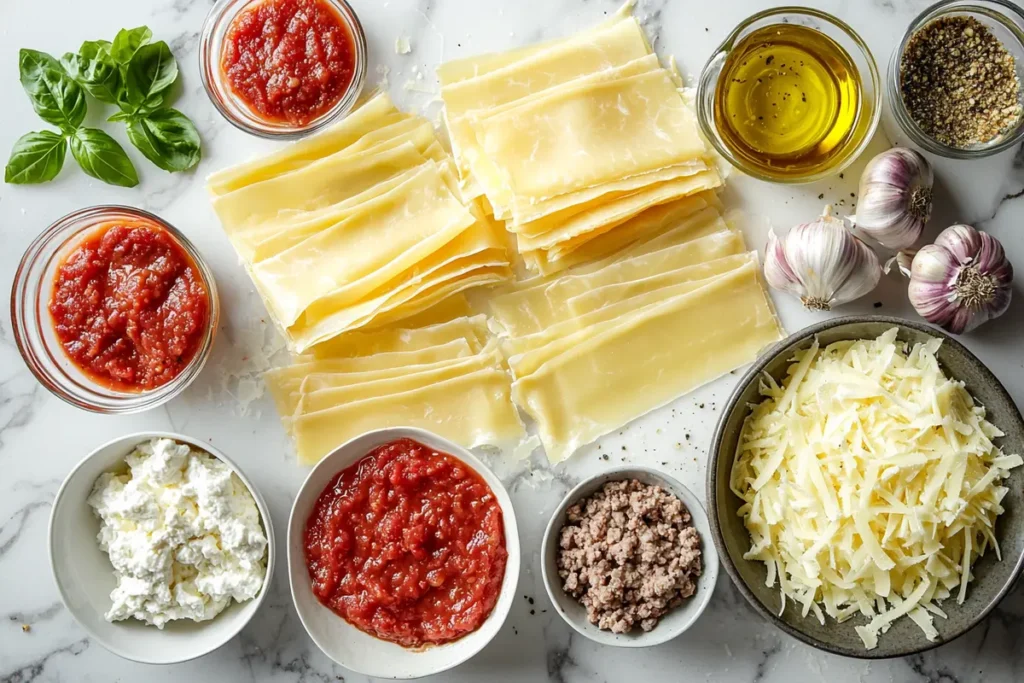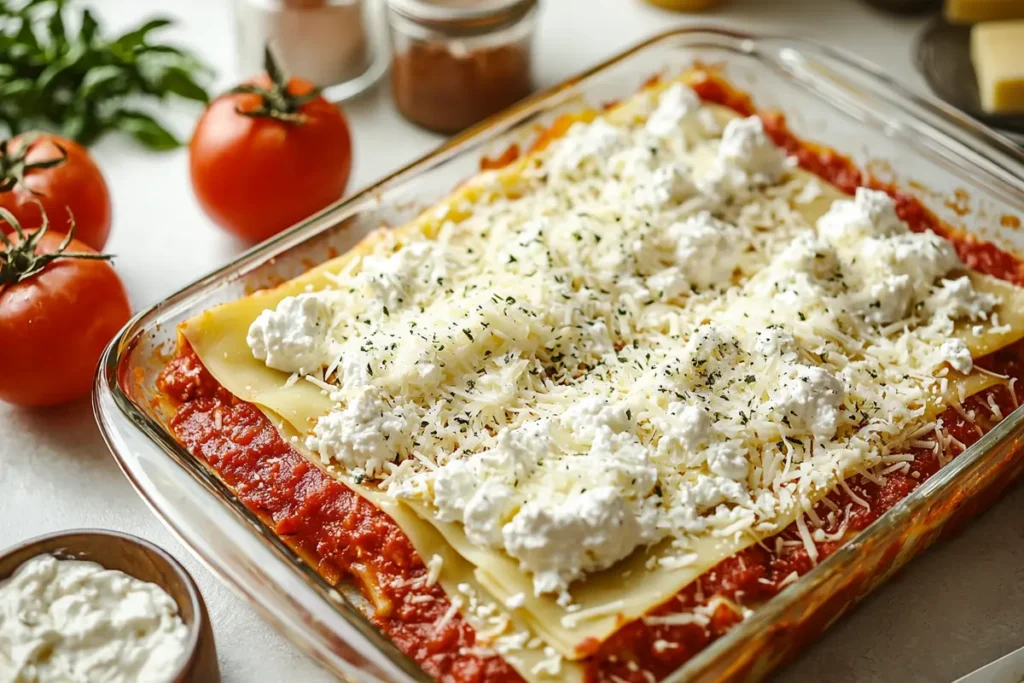Lasagna lovers, rejoice! One of the biggest questions surrounding this classic dish is whether you need to boil Barilla lasagna sheets before use. In this guide, we’ll dive into the details, offering practical advice for making the perfect lasagna. Whether you’re using oven-ready sheets or the traditional ones, we’ve got you covered with step-by-step preparation tips and expert insights.
Table of Contents
Introduction to Barilla Lasagna Products
Understanding Barilla’s Range of Lasagna Sheets
Barilla offers a variety of lasagna sheets, but do you need to boil Barilla lasagna before baking them? Whether you’re short on time or enjoy the ritual of cooking from scratch, Barilla has a product for you.
Oven-Ready Lasagne: A Time-Saving Option
One of Barilla’s standout products is its oven-ready lasagna sheets, which are pre-cooked and dried during production. This feature eliminates the need for boiling, saving both time and effort. Simply layer them with your favorite ingredients and bake!
Traditional Lasagne Sheets: Classic and Versatile
For those who appreciate the traditional method, Barilla also offers classic lasagna sheets. These typically require pre-boiling to soften them before layering. They’re perfect for recipes where texture and authenticity matter most.
Why Knowing the Difference Matters
Each type of Barilla lasagna sheet brings unique preparation needs. Confusion about whether to boil them can lead to soggy pasta or undercooked lasagna. Understanding the differences ensures your dish comes out perfect every time, whether you’re hosting dinner or enjoying a quiet family meal.
How Barilla Lasagna Fits into Modern Kitchens
With their wide range of products, Barilla lasagna sheets cater to both seasoned cooks and busy individuals seeking convenience without compromising quality. This flexibility has made them a pantry staple worldwide.
Preparation Methods
Do You Need to Boil Barilla Lasagna Sheets for Perfect Cooking?
When it comes to preparing Barilla lasagna, whether you need to boil the sheets depends entirely on the type of lasagna you’re using. Each variety has its own preparation method, and knowing the right approach can make or break your dish.
Oven-Ready Lasagne
Barilla’s oven-ready lasagna sheets are designed for convenience and ease of use. These sheets come pre-cooked and are dried during manufacturing, making them ready to use straight from the box.
No-Boil Requirement
One of the standout features of Barilla oven-ready lasagna sheets is that they don’t require boiling. Instead, they soften and cook during the baking process as they absorb moisture from the sauce.
Direct Layering Technique
To use these sheets, simply layer them with your sauce, cheese, and fillings directly in the baking dish. For the best results, ensure the sauce is evenly spread and slightly liquidy to allow the pasta to hydrate fully during baking.
Traditional Lasagne Sheets
On the other hand, Barilla’s traditional lasagna sheets bring the classic experience of pasta preparation. When preparing Barilla lasagna, a common question is, do you need to boil Barilla lasagna? The answer is no for oven-ready sheets—they can be layered directly.
Boiling Necessity
Traditional lasagne sheets are made from uncooked pasta dough, meaning they need to be softened by boiling water. Skipping this step can leave your lasagna undercooked and chewy.
Pre-Cooking Instructions
To boil the sheets, fill a large pot with salted water and bring it to a rolling boil. Gently slide the sheets into the water one by one to prevent sticking. Cook for 4–6 minutes or until slightly soft but not fully cooked (al dente). Drain carefully and lay the sheets flat on a clean towel to cool.
Step-by-Step Guide to Preparing Barilla Lasagna
Preparing Oven-Ready Lasagne
Gathering Ingredients

Start with high-quality ingredients. You’ll need:
- Barilla oven-ready lasagna sheets
- Tomato or marinara sauce (slightly thin)
- Ricotta or bechamel sauce
- Shredded mozzarella cheese
- Optional: Cooked ground beef, chicken, or sautéed vegetables
Assembling the Layers

- Preheat your oven to 375°F (190°C).
- Spread a thin layer of sauce at the bottom of a baking dish to prevent sticking.
- Place a layer of oven-ready sheets directly over the sauce.
- Add another layer of sauce, followed by ricotta or bechamel, and sprinkle mozzarella cheese.
- Repeat the layers until the dish is full, ensuring the topmost layer is generously covered with sauce and cheese.
Baking Instructions
- Cover the dish with foil to trap moisture and bake for 25–30 minutes.
- Remove the foil and bake for an additional 10 minutes to achieve a golden, bubbly top.
- Let it rest for 10–15 minutes before serving.
Preparing Traditional Lasagne Sheets
Boiling the Sheets
- Boil salted water in a large pot.
- Add the sheets in batches, ensuring they don’t overlap. Stir gently to prevent sticking.
- Cook until al dente, drain, and cool as described above.
Assembling the Lasagna
- Preheat your oven to 375°F (190°C).
- Begin with a thin layer of sauce in the dish to avoid sticking.
- Place a boiled sheet on top, followed by sauce, ricotta, and mozzarella.
- Continue layering until the ingredients are used, ending with sauce and cheese.
Baking Instructions
- Cover with foil and bake for 30–35 minutes.
- Uncover and bake for another 10–15 minutes for a crisp, cheesy top.
- Allow the lasagna to cool slightly before slicing.
Enhancing Your Lasagna
Tips for Perfect Lasagna
A great lasagna isn’t just about the ingredients—it’s about balance, technique, and timing. Here’s how to elevate your dish and make every bite unforgettable.
Sauce Consistency
The sauce is the backbone of any lasagna. Aim for a slightly thinner consistency when using oven-ready lasagna sheets, as they absorb moisture during baking. For traditional sheets, a thicker sauce works best since the pasta is already boiled. Don’t skimp on flavor—add fresh herbs, garlic, or a splash of vegetable stock for richness.
Cheese Selection
The perfect lasagna balances creaminess and a gooey texture. A mix of cheeses works wonders:
- Ricotta or cottage cheese for creaminess
- Mozzarella for that signature stretch
- Parmesan for a sharp, savory kick
Layering Techniques
Layering is an art! Start with a thin layer of sauce to prevent sticking, then add pasta, more sauce, cheese, and optional fillings. Repeat until the dish is full. Avoid overloading each layer to keep the texture light and evenly cooked.
Baking Tips
Covering your lasagna with foil for most of the baking time traps steam, ensuring the pasta cooks evenly. Remove the foil during the last 10–15 minutes to achieve a golden-brown top. Let the lasagna rest for at least 15 minutes after baking—this step helps the layers set and makes serving easier.
Common Mistakes to Avoid
Even seasoned cooks can trip up when making lasagna. Watch out for these pitfalls to ensure your dish turns out perfectly.
Overcooking Pasta Sheets
Whether boiling traditional sheets or using oven-ready ones, overcooked pasta can lead to a mushy mess. Stick to the recommended times and avoid letting boiled sheets linger in hot water.
Insufficient Sauce
Dry lasagna is a common complaint. Generously spread sauce across each layer, particularly when using oven-ready sheets, as they rely on the sauce for moisture.
Uneven Layering
Sloppy layering can cause uneven cooking and flavor distribution. Keep each layer consistent—spread sauce and cheese evenly, and avoid piling too much in one spot.
Skipping Resting Time
Lasagna that’s sliced straight out of the oven often falls apart. Allow it to cool slightly before serving. This resting time lets the layers set, ensuring neat slices and better texture.
Frequently Asked Questions
Does Lasagna Pasta Have to Be Boiled?
Not always. It depends on the type of pasta you’re using. Traditional lasagna sheets usually need boiling before assembly, as they’re uncooked and require softening. On the other hand, oven-ready lasagna sheets, such as Barilla Oven-Ready Lasagne, don’t need boiling. These sheets are pre-cooked and designed to hydrate during baking by absorbing moisture from the sauce. Always check the packaging instructions to determine whether boiling is necessary.
How do I store leftover lasagna made with Barilla sheets?
To store leftover lasagna, first allow it to cool completely. Then, transfer it to an airtight container or cover the dish tightly with foil or plastic wrap. Refrigerated lasagna stays fresh for up to 3–4 days. To freeze leftovers, wrap individual portions in plastic wrap, then in foil, or use freezer-safe containers. Frozen lasagna remains good for 2–3 months.
Reheat refrigerated lasagna in the oven at 350°F (175°C), covered with foil to prevent drying. For frozen lasagna, thaw it overnight in the refrigerator before reheating, or reheat directly from frozen by increasing the baking time by 20–30 minutes.
What Happens if You Don’t Pre-Boil Lasagna Noodles?
If you skip boiling traditional lasagna noodles, they may not soften adequately during baking, resulting in a chewy texture. Traditional noodles require boiling to make them pliable and allow them to absorb flavors. However, oven-ready lasagna sheets, like Barilla’s, are designed for no-boil preparation and will cook perfectly in the oven when layered with enough sauce.
Do Fresh Lasagna Noodles Need to Be Precooked?
Fresh lasagna noodles typically don’t need pre-cooking. They are soft and pliable, making them ready to layer straight out of the package. However, ensure there’s enough moisture in your sauce to cook the pasta fully in the oven. If the recipe uses a thick or dry sauce, you might want to briefly blanch the noodles for better results.
How Do You Use Barilla Lasagne Sheets?
Oven-Ready Sheets: These require no boiling. Simply layer them directly with sauce, cheese, and fillings. Ensure the sauce is slightly liquidy to hydrate the sheets as they bake.
Traditional Sheets: Boil these in salted water for 4–6 minutes until al dente. Cool on a towel before layering with your preferred ingredients.




